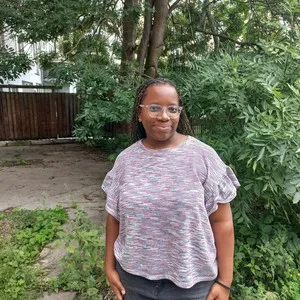While I tried to explain my complicated feelings about the concept of a chai latte to my friend, her face settled into confusion and concern. I went on and on about how much I hate chai lattes while one lay cooling slowly right in between us. She had every right to be confused. I was too – but now I think I can explain.
Ever since I was little, I distinctly remember a big flask of milk tea on Sunday mornings. The chai was rich in full cream milk, spiced with cardamon, cinnamon, nutmeg, and cloves. My mom would add freshly grated ginger that would hit the back of your throat and cure you of a cold you didn’t have. The heavy saucepan would sit in the sink with a dark gritty mass of damp tea leaves.
“Do you want chai? With milk?”
In many languages, chai translates to tea. Though chai is different wherever you go and how it’s made varies from one region to another, “chai” and “tea” have always been interchangeable to me. I love cardamon in my chai whereas my Goan friend swaps out the black tea for earl grey and adds a drop of vanilla extract. If my mother had it her way she would make it 85% milk but I prefer an equal balance of water and milk. Chai is both black tea and tea with milk, depending on the day. Depending on who you ask.
When I first heard about the chai latte, I thought it was strange that people drank coffee with tea. I’d never heard of it. It wasn’t until I had my first American chai latte. On the Starbucks menu, it is described as “Black tea infused with cinnamon, clove and other warming spices is combined with steamed milk and topped with foam for the perfect balance of sweet and spicy.”
I was excited; it sounded just like the tea I’d had all my life.
So you can imagine my surprise when I lift the lid of my to-go cup and a pale drink is staring back at me. With the whiff of cinnamon, I ignored the color and took a sip.
Underwhelming.
The sugar and cinnamon were overpowering – and it was cold. There’s a kick of ginger or nutmeg somewhere but it’s barely noticeable. Worst of all, I couldn’t taste the tea. I didn’t know it was possible to make chai without tea. Tea, whichever kind you use, adds a distinct flavor and though I couldn’t describe it at that moment I could tell it was not there.
“But”, I thought “maybe I made a mistake,” so, I tried it again. I tried it at Starbucks and Opus. I tried it with vanilla. I had it iced, hot, and dirty (which in Starbucks speak is with the addition of espresso) and every time it was a watered-down mix of milk, cinnamon, and sugar syrup. I felt lied to. In the first few months, I hated it. I hated when people said “chai latte.” Moreso, when someone said “chai tea latte.”
I wanted to tell everyone that they were getting the wrong impression of authentic chai.
Where did the tea go?
From my extensive experience attempting to make chai in the microwave, I know there is a difference between brewing chai and adding milk to a cup of tea. This turns out to be what many coffee shops do, at Starbucks the chai is made from a concentrate of tea, spices, and sweeteners to which they add milk for each order. I think the biggest problem arises because they don’t let the tea steep for long enough. The concentrate is made from weak tea.

Though I hate having to say it, the chai latte is fine.
As someone who doesn’t drink coffee and likes milk, the chai latte is a sensible choice. Not because it is like anything I’ve had before and not because it is (what I consider) actual chai but because it gives you a warm feeling like something you’d want to help you fall asleep. And some days I want to be the kind of college student who starts her day with an aesthetic cup of coffee. Though if I wanted cold tea with milk I’d just have boba.
Accepting that the chai latte is fundamentally different from what I know allows me to appreciate it for what it is. I want to keep trying to find a good chai latte and if not for sake of science then for the little joy it brings me.


